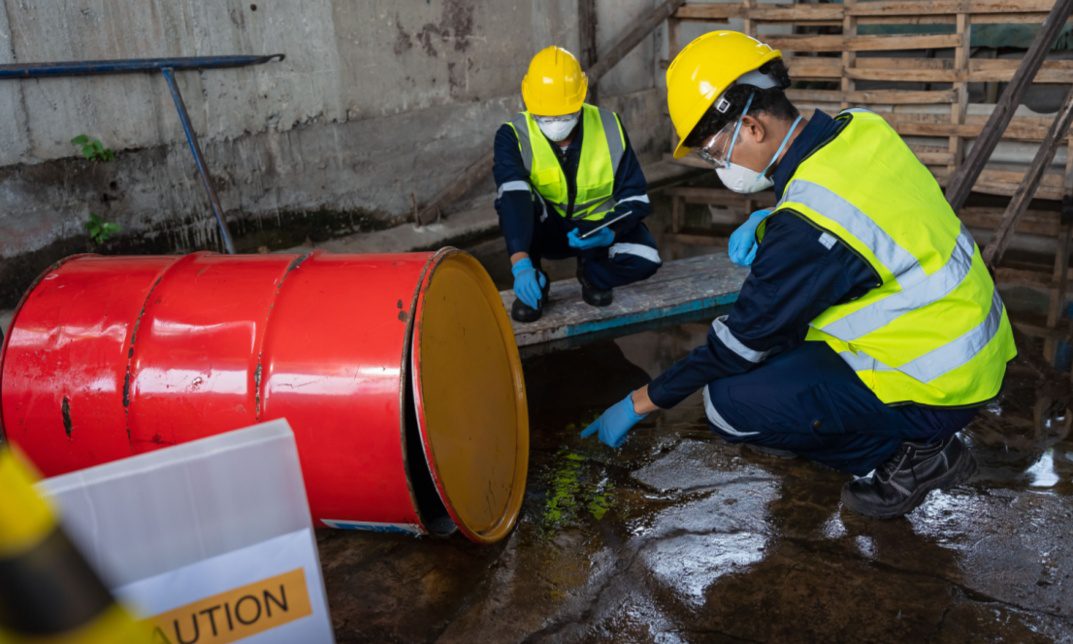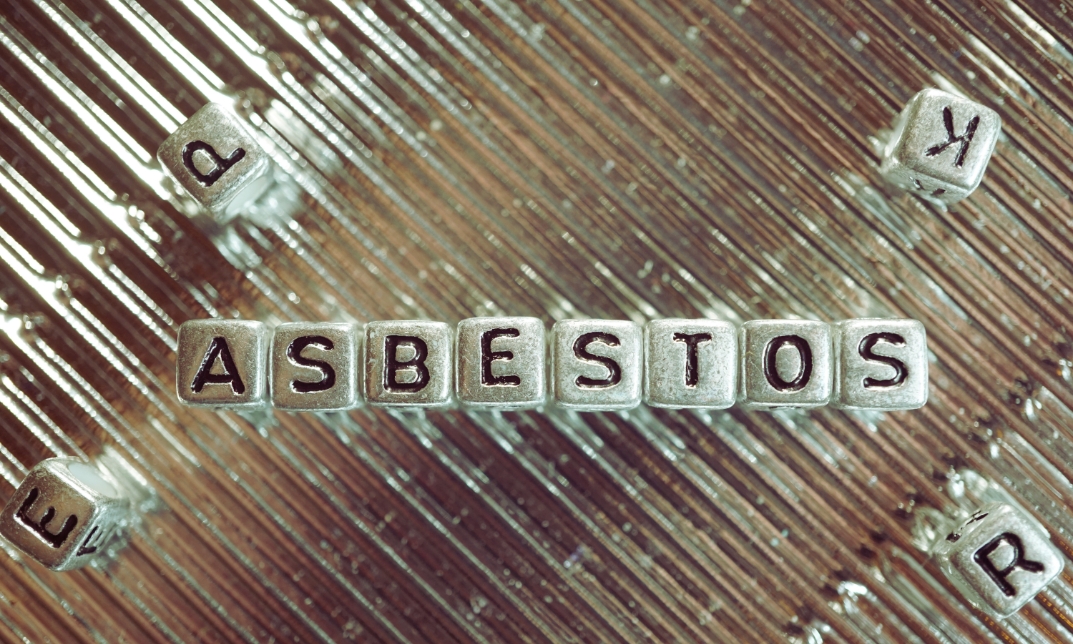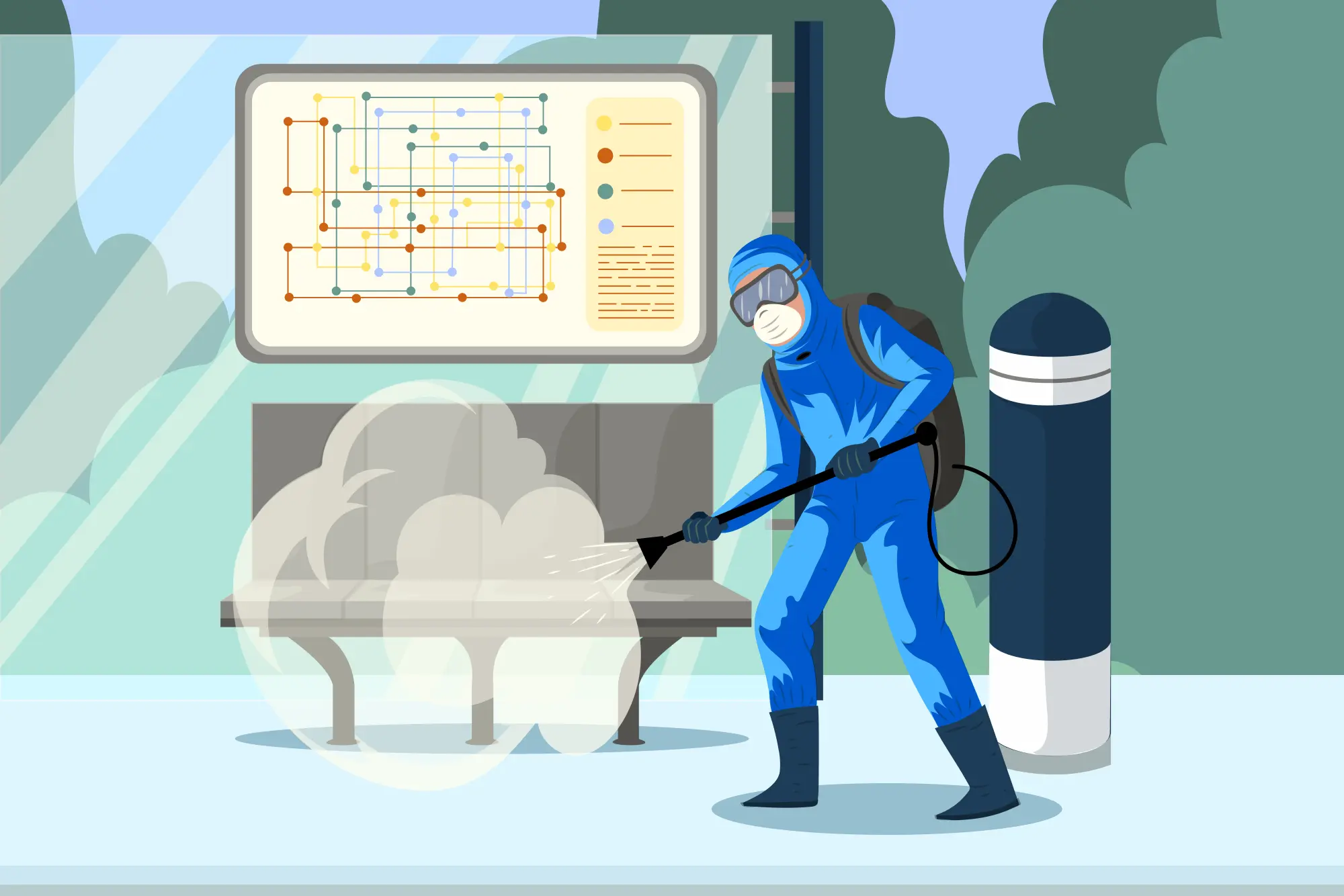No products in the basket.
Introduction:
Food hygiene is a set of food manufacturing techniques that attempt to decrease biological food hazards through safe and clean operations to safeguard the public’s health from foodborne infections. When it concerns food, hygiene should never be compromised. It is the most important aspect of maintaining excellent health and general well-being. Every customer has the right to safe and high-quality food. However, occasionally, people all over the world become ill as a result of consuming contaminated food. Such incidents are evidence of breaches in a food business’s commitment to food cleanliness and safety.
Food hygiene is important in guaranteeing food safety and preventing foodborne infections. Whether you operate in a restaurant, a catering service, or a food factory, maintaining food hygiene is critical to preventing hazardous contamination and protecting your customers and reputation. This component of food manufacturing techniques requires you and your entire staff to work together. A HACCP (Hazard Analysis Critical Control Point) strategy must achieve more than high-quality food safety. It must be practised and regularly monitored for the duration of your food business’s existence.
In this blog article, we’ll talk about the difficulties and useful tips for food safety and give learners crucial knowledge they should have before beginning the course. The food hygiene course aims to ensure that individuals handling food professionally have the knowledge and skills to maintain a safe and hygienic environment.
Definition of Food Hygiene
There are many definitions of food hygiene, but we need to make it simple for you and explain what it is. Simply put, food safety refers to the practices a food production company employs to protect public health from the dangers of foodborne illnesses caused by microbial contamination. In particular, food safety focuses on the biological side of keeping food safe.
Food hygiene is a set of techniques and principles that help maintain your operations clean and healthy. This word refers to food handling, transportation, safe storage, and material processing.
The following are the specific goals of food hygiene:
- To keep food from rotting due to contamination caused by unsanitary environmental circumstances, poor food safety standards, and a lack of food safety awareness.
- To guide and educate everyone involved in preparing your product on safe food handling and hygienic practices.
- To increase the shelf-life of your goods through hygienic manufacturing.
- To avoid releasing hazardous food onto the market, which might lead to foodborne illness.
Main Elements of Food Hygiene
-
Preparation and Food Handling
In a care facility, staff employees who are not merely cooks but also prepare, store, and serve food qualify as food handlers. To minimize cross-contamination, anybody who works with food must practise basic Food Hygiene. Here are several examples:
- Wash your hands and surfaces regularly.
- Cleaning any raw food equipment or crockery.
- Colour-coded cutting boards and equipment are available for raw meat, fish, and poultry, as well as make them use to cook for meals.
- Ensure that all food handlers are properly dressing In order.
-
Food storage and temperature regulation
The food hygiene requirements specify tight standards for the temperatures that must be preserve throughout each of the phases of food production, including when food stays at the care facility. The danger zone for food temperatures is between 8°C and 60°C. According to the Food Safety Authority, a refrigeration temperature of 8°C or below guarantees food safety and avoids bacterial development. Care facilities can limit the risk of food contamination by dangerous microorganisms by following the Food Standards Agency’s (FSA) temperature requirements.
Food safety is also dependent on proper food storage. Following the storage instructions on the label, storing raw meats in the bottom of the fridge to minimise spillage, and adhering to best-before dates are all examples of how to properly store food.
-
Allergens and special dietary requirements
Many care facilities now cater to vegan, vegetarian, halal, and diabetic diets. Any food allergies a resident has will be part of their care profile to ensure they have no access to these items.
The kitchen staff or chef is largely responsible for looking after the meals at a nursing home. However, the care home management is also responsible, which means it takes a collaborative effort from the manager and catering staff to produce high-quality, nutritious food prepared in a clean and sanitary atmosphere and safe for the care home residents to consume. To guarantee the safety of the residents, care home employees must maintain excellent food hygiene.
The importance of food hygiene in care homes
Excellent food hygiene is essential in a care home. Because age impairs the immune system and its ability to fight illness, residents of a care home are frequently old and might be highly sensitive to bad eating habits. This makes hazardous dietary practices harmful to their health and safety. Catering personnel in the care home must take great care to keep the cooking and preparation spaces clean and germ-free. They must follow the Food Safety Act of 1990 to guarantee that the food and drink they serve are handled, stored, prepared, and delivered in a way that fulfils the act’s criteria and safeguards the health and safety of the care home residents.
Good food hygiene is always vital, but special care needs to be taken in a care home to protect the safety of the residents. Care, home residents, are often elderly, feeble, have a weakened immune system, have continuous health issues, or are more susceptible to disease. As a result, they are more prone to develop food poisoning and become unwell due to poor food hygiene. Food poisoning may be fatal, and infectious illnesses are more likely to spread in healthcare settings. This is why storing, handling, preparing, and serving food in a clean, sanitary environment is critical to keep hazardous microorganisms at bay.
How to practice food hygiene at home?
- Practice Good Personal Hygiene
Everyone should exercise personal hygiene. Before touching food to prepare, always wash your hands with soap and water.
- Clean Utensils and Cooking Equipment
Before cooking, all cooking equipment should be well-sanitized and thoroughly cleaned. This is especially critical for equipment closely touching food, such as cutting boards, knives, countertops, mixers, blenders, etc. These regions harbour harmful germs that, when consumed, can cause significant sickness. All utensils and crockery must be cleaned for the same reasons.
- Refrigerate foods that need to be kept cold
Raw meats, dairy, and other foods must be kept cool (4°C – 39°F) to prevent germs from developing before consumption. Keeping items cold also guarantees they do not spoil before expiry dates.
- Wash Fruits and Vegetables Before Use
Most fruits and vegetables are acquired fresh from the farm, shop, or market; because these items include soil, insects, and chemical residues, it is critical to rinse them with water, salt, or vinegar before keeping them in the food rack.
- Keep Dry Foods Separate From Liquids
Food hygiene is another crucial habit for washing, mixing, and preparing food. Water affects our systems and our overall health in a variety of ways. Foods produced with contaminated water can easily cause vomiting, diarrhoea, and stomach disturbances; thus, it is critical to always use clean water to wash and cook meals.
Why is Food Hygiene Important for Your Food Business?
Maintaining strong sanitary procedures will provide various advantages to a business. The following are some significant indicators of why it is critical to implement food hygiene in your business.
-
Provide safe and hygienic food
A food business is required by law to serve nutritious and sanitary food. Implementing food hygiene standards is critical. Your company will be able to consistently deliver safe food and acquire a good image. Failure to follow sanitary measures might result in complaints and difficulties with public health safety.
-
Avoid food waste
Improper food handling will result in unnecessary waste. For instance, if cross-contamination occurs during packaging, a batch might have to be eliminate based on the contamination. If the contamination arrives before the contamination becomes apparent, your organisation must recall, reprocess, or dispose of the impacted products. Proper food hygiene standards ensure that little to no waste occurs and that it is well-regulated.
-
Build consumer trust
It benefits a company’s reputation and business sustainability by consistently offering high-quality, safe items that customers require. Recalls or public health issues associated with your company can harm your brand’s reputation. Moreover, most consumers return to the companies they are most familiar with and have had positive experiences.
-
Personnel development
When a company consistently offers high-quality, safe products as requested by customers, it benefits its reputation and commercial viability. Reports of recalls or public health risks associated with your company might harm your brand’s reputation. Furthermore, most consumers return to companies they are most familiar with and have had positive encounters with.
-
Improve business efficiency
Good sanitary procedures result in less food waste, a more efficient workflow, and higher production. Your company saves money and increases profits by reducing food waste and ensuring a continuous and effective workflow.
-
Keep Dry Foods Separate From Liquids
Food safety should extend to storing dry items such as grains and dried and powdered meals. Moulds attracts moist food. Grains, powdered meals, baked goods, canned goods, and dry foods should be away from liquids since moulds can easily grow on them, causing sickness, allergies, and food poisoning in adults and children.
-
Cook Food to an Appropriate Temperature
Cooking food to the right temperature is a crucial food safety precaution, as raw goods such as eggs and meat may easily result in Salmonella and E. coli illnesses if not properly cooked. Foods such as pigs, chickens, cattle, and animal products such as sausage should be on cooking longer until there are no signs of pink on the flesh, joints, and bones of such animals since bacteria can easily survive the cooking process in these areas.
-
Keep Insects and Pests Away From Food Areas
Controlling insects and pests is another important food hygiene tip to remember, as these animals often appear in our homes, especially in places like fridge corners, kitchen cabinets, shelves, and dark corners of the kitchen. Cockroaches, flies, and rodents, as we all know, are terrible insects and pests; they can spread pathogens from one surface to another, resulting in foodborne illness. For this reason, it is always a good idea to cover pots containing foods, spray the shelves, and clean our refrigerator whenever there is a foul odour or dripping.
-
Always Use Clean Water to Prepare Food
Food hygiene is another crucial habit for washing, mixing, and preparing food. Water affects our systems and our overall health in a variety of ways. Foods produced with contaminated water can easily cause vomiting, diarrhoea, and stomach disturbances; thus, it is critical to always use clean water to wash and cook meals.
Food Hygiene guidelines and principles for food businesses
This may be used in practically every aspect of a food production business. Food hygiene is highly important, from creating raw materials to distributing products. Consumers should also understand what food hygiene is. Everyone takes on this responsibility.
Below are a few fundamental food hygiene behaviours, concepts, and standards to implement in your organization.
-
Cleaning:
Effective cleaning is essential to guarantee that all equipment and surfaces are pollution-free. Cleaning also refers to the pre-work sanitation procedure. Some of the fundamental actions are as follows:
- establishing a regular cleaning schedule;
- create monitoring documents to verify the cleaning schedule is followed;
- employing food-grade chemicals and disinfectants;
- before beginning procedures, sterilize the work area;
- Wash materials such as fruits and vegetables before cooking; and
- All cooking items should be washed and sanitized before and after use.
To make cleaning operations more visible, we propose developing monitoring forms that include the places to be in a clean and disinfect state, who gets to conduct the cleaning, how frequently it should be perform, and a verification of cleaning product inventory.
-
Cooking:
Cooking thoroughly is required to eliminate hazardous germs that might cause food poisoning. Each food item necessitates a specific cooking time and a safe and suitable temperature for the core of your product. A food hygiene sign stating the proper cooking temperatures for each type of food is essential for ensuring that no item is undercooked. Food safety requirements for proper temperature must always be present and available for operators to use as a reference. This food hygiene method also includes reheating your meal after it goes through being store at room temperature for a period of time to ensure that any potential contaminants are the subject of discussion.
-
Chilling:
Proper chilling is critical for preventing bacterial development and keeping food safe, especially for perishable foods like ready-to-eat salad, cooked meat, etc. Storing your food goods before or after use helps to keep harmful bacteria at bay. Chilling entails preserving your food in the circumstances with temperatures ranging from 35°F to 40°F (2°C to 4°C).
-
Cross-contamination:
Cross-contamination is one of the most serious issues in food hygiene. This problem arises when bacteria spread throughout the food, equipment, and workplaces. Cross-contamination happens due to faulty material segregation, comparable utensils for raw and cooked food use, inappropriate cleaning of the working space, and other factors. Bacteria, for example, can move from raw foods to final products when equipment and utensils are not properly separated. A solid workflow can also help to reduce cross-contamination. An efficient workflow that adheres to food hygiene and safety standards does not have any “backflow,” in which processed product returns to prior areas of the working area. Contaminations can be managed more effectively this way.
Moreover, cross-contamination is largely avoided by thoroughly cleaning your products before and after use. This covers your workstation and even your protective equipment.
-
Safe Transport:
Contamination and spoiling may result from improper handling during transport from your facilities to shops. As a result, it is vital to ensure that the containers are appropriately in protection from potential contamination, that the necessary temperatures (refrigerated vans, cool bags) remain constant for chilled or frozen commodities, and that raw ingredients remain separate from ready-to-eat products. This includes cleaning the car regularly. Any food product, whether raw or cooked, must not contact the floor of your vehicle during transportation. Pallets, cartons, or trays must be where you store your stuff. Furthermore, a vehicle used to transport raw materials is not suitable for transporting finished goods at the same time, and it must be thoroughly transition clean.
-
Personal Hygiene:
Personal hygiene is the responsibility of all individuals working in food handling areas. Some of the important techniques are as follows:
- at all times, wear clean and protective clothing;
- keeping hair neat and covered with a hat or a hair net;
- hands should be thoroughly washed before and after handling food;
- eating, smoking, chewing gum, sneezing, spitting, and touching one’s face or hair.
-
Proper waste management:
It is natural for a food business to create trash. Fruit peels, raw material packing, bones, seeds, and even rotten meals are examples of waste. There is both biodegradable and non-biodegradable trash on the list. These wastes must be stored away from the working area to avoid contamination. Furthermore, biodegradable garbage attracts a wide range of pests. Pests must be went through more frequently than other waste items to prevent them from congregating around your industrial location. Waste management must take place away from where food is stored.
-
Safe water:
One of the most commonly utilized elements in all enterprises is safe drinking water. It serves in applications beyond than formulations and food preparation, including juices and restaurant cuisine. Water additionally serves to wash raw materials and utensils. As a result, the water quality in all sections of your food industry must be clean and drinkable.
-
Staff Training:
Proper orientation and constant improvement of your staff’s awareness of food hygiene are important to maintaining food and hygiene together in harmony. New staff must be educated on how your company executes food safety measures and the necessity of these processes. Food service establishments have a duty by law to provide adequate food hygiene training to food handlers and workers. Everyone must understand their responsibility in ensuring food cleanliness and safety. In addition to the original training, refresher courses must go on. This activity assists management in reminding all employees of the significance of food safety and includes any instances of noncompliance with food hygiene for reference.
How can you help your team manage food hygiene?
To maintain high food cleanliness and safety levels, food establishments must implement a comprehensive and all-inclusive food safety management system. FoodDocs specializes in this solution. Our experts developed the most efficient and effective digital solution to help your food industry comply with food hygiene regulations.
When you adopt our digital food safety solution, you will receive the following benefits:
- Get up-to-date and essential food safety monitoring forms prepared automatically by our AI system. These monitoring forms aim to be entirely adaptable to satisfy your food hygiene needs and rely on your food operations.
- All monitoring forms include clear instructions on completing each assignment and monitoring it appropriately. These instructions assist you in training food handlers and ensuring that all activities are carried out correctly.
- You may also buy a smart notification system to alert food handlers when a task has to be it happen. This system feature guarantees that all food hygiene procedures take place on time and remain in mind at all times.
- Obtain a real-time dashboard that provides an overview of your activities. With this functionality, you may save around 20% of your time overseeing your team. You may readily identify locations that require further attention to maintain a high level of food hygiene standards.
Key Regulations for Food Safety in the UK
In England, the Food Standards Agency (FSA) enforces food safety laws and ensures food safety. The following are the key laws that underpin the Food Safety Standards Agency’s work.
- 1999 Food Standards Act
- The Food Safety Act of 1990 (England and Wales)
- Food Safety Order of 1991 (Northern Ireland)
- Food Information Regulation General Food Law (Northern Ireland and Wales)
The primary goal of these key regulations is to protect public health in the food industry.
Food hygiene ratings
In the UK, businesses that serve or prepare food must display a Food Hygiene Rating Scheme (FHRS) sticker or card. The food hygiene ratings are based on factors such as the handling, preparation, cooking and storage of food and how hygienic the building and facilities are.
Summary
The phrase “food hygiene” refers to preserving and preparing foods to be safe for human consumption. This word normally refers to these measures at the individual or family level, whereas “food sanitation” usually refers to these processes at the commercial level within the food business, such as during manufacturing and packing or at stores or restaurants.
Food hygiene in the home kitchen involves storing food properly before use, washing one’s hands before handling meals, keeping a clean atmosphere when preparing food, and ensuring that all serving dishes are clean and pollutants-free.
Is there anything we missed? We strive to make this blog post a complete overview of traffic-related issues and solutions. If you see something we overlooked, please let us know in the comments section; we appreciate your feedback.
FAQs
How do we take care of our food?
Follow the four food safety rules at every stage of food preparation:
- Keep cooked food or leftover food covered.
- Cook just enough food needed.
- Do not throw raw food around the house; store them well.
- Pack lunch well.
Why is Food Hygiene Training Important?
Food safety law compels firms to educate food workers on food safety. This allows them to reduce contamination when handling food goods and assists their company in maintaining an appropriate safety system. Food hygiene training, which teaches food workers safe handling, storage, and cleaning practices, effectively communicates this knowledge. These best Food Hygiene practices protect clients from food poisoning and allergic reactions, reduce food waste, and increase efficiency.
What’s the Difference Between Food Safety and Hygiene?
“food safety” refers to all the key measures organizations must adhere to to ensure food safety. ‘Food hygiene’ is one of these key activities, which implies it’s a subtype of ‘food safety’. Because food safety falls under the umbrella phrase ‘food safety,’ it does not encompass all other critical elements of food safety. This is a crucial distinction, especially when implementing food control systems in your facilities. Food safety refers to a whole risk-management system. Meanwhile, This refers to a specific set of measures for addressing only one component of food safety.
Knowing this will allow you to better identify what degree of expertise your employees require and how to implement the essential controls. This will help you make more educated decisions about improving your company’s processes and what more training you require for Food Safety and Hygiene.
Managers and supervisors, for example, must understand how to execute a food safety system such as HACCP. In contrast, someone who works directly with food and is not responsible for implementing management systems generally requires food hygiene awareness.
How are Food Hygiene Ratings Calculated?
When rating a food company for Food Hygiene, the Food Requirements Agency considers the food hygiene standards encountered during the inspection. The Food Levels Agency will monitor certain sorts of food safety procedures. Thus food enterprises must maintain high standards of practice at all times. When determining a food hygiene rating, the Food Standards Agency will examine the following factors:
- How staff handle food on the premises.
- Whether or not food stays correctly and hygienically.
- Whether food is properly and hygienically ready.
- Is it safe to cook and prepare food in these facilities?
- How well are food safety and sanitation practices managed?
- Are all staff aware of the importance of Food Safety and Hygiene?
To determine a food business’s food hygiene rating, search it up online, or look for a sign on the premises that states the date of inspection by the local authority’s of safety inspector. Businesses in England should demonstrate their hygiene grade sticker but they have no obligation to do so. Businesses in Wales and Northern Ireland must comply by law to display their hygiene grade sticker prominently, such as in a window.
The Food Standards Agency assigned a failing hygiene grade to one in every twenty food enterprises in October 2019, following an inspection of over 250,000 food establishments. Across the UK, there is a push to enhance food companies’ food hygiene ratings.
Food hygiene ratings reflect favourably on the food business and attract more customers to their products and services. As a result, it is critical to incorporate proper food hygiene measures into your food service operation.
What is a food hygiene certificate?
A valid Food hygiene certificate verifies that you and all your employees who work with have received sufficient Food Safety training. This certificate shows your customers, employees, and the Environmental Health Officer that your company is doing everything possible to ensure people’s safety.
How can this blog help me?
Food hygiene is a critical issue regarding the safety of your employees and consumers. On the other hand, the deep, scientific character of food safety rules frequently leads to mass misunderstanding.
As a result, we frequently publish informative articles on issues such as food temperature recommendations and the repercussions of poor food hygiene to shed some light on the subject.





